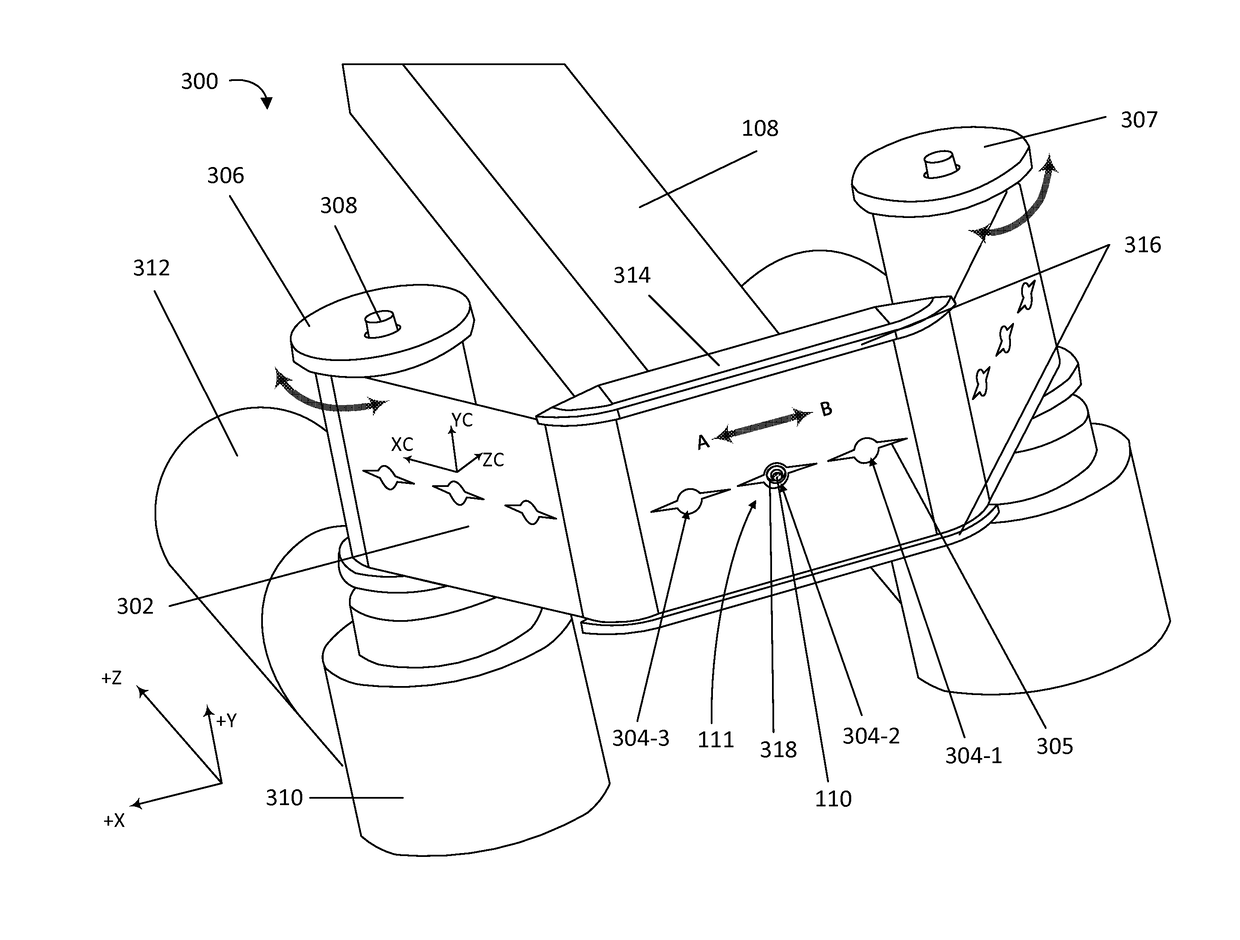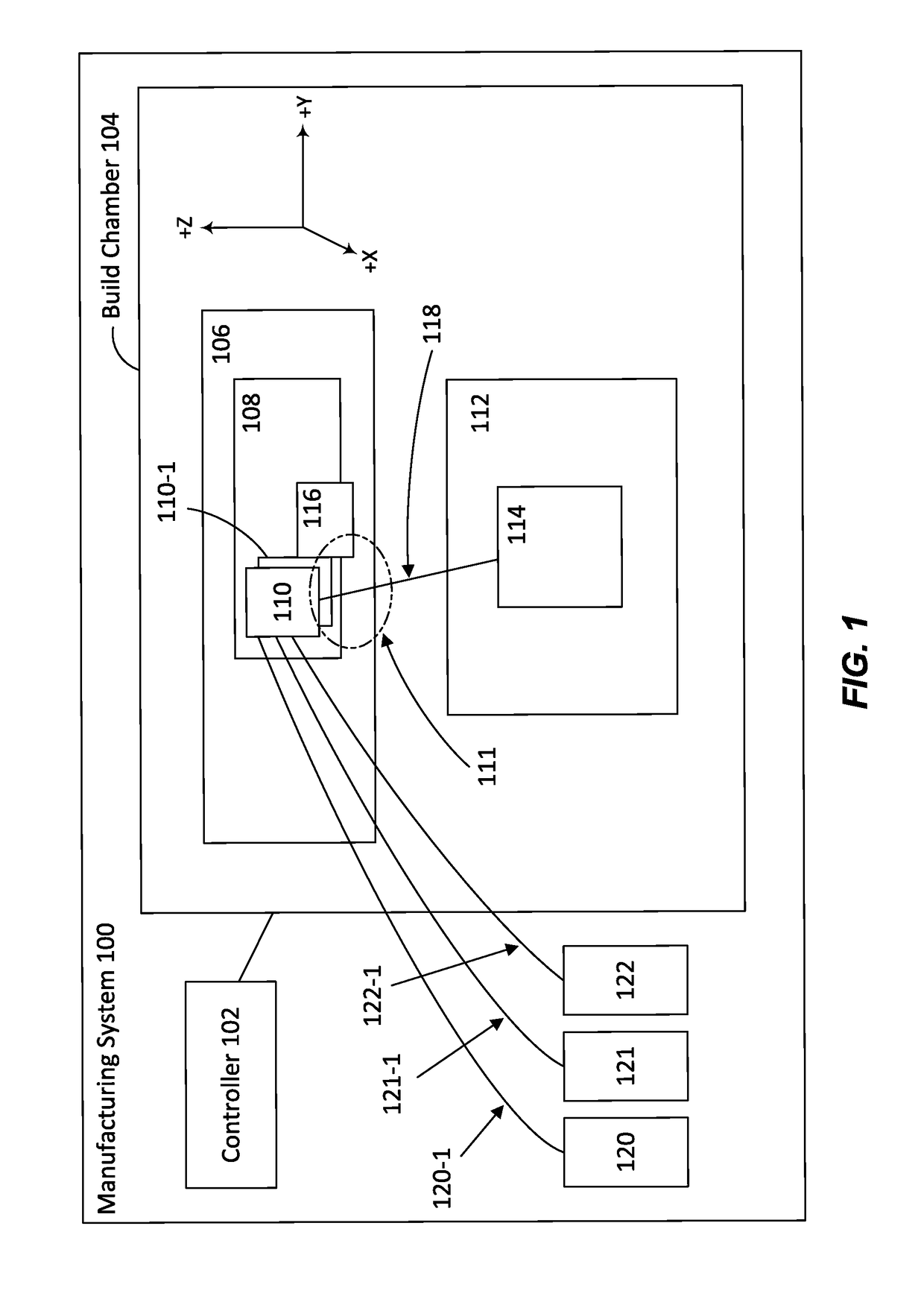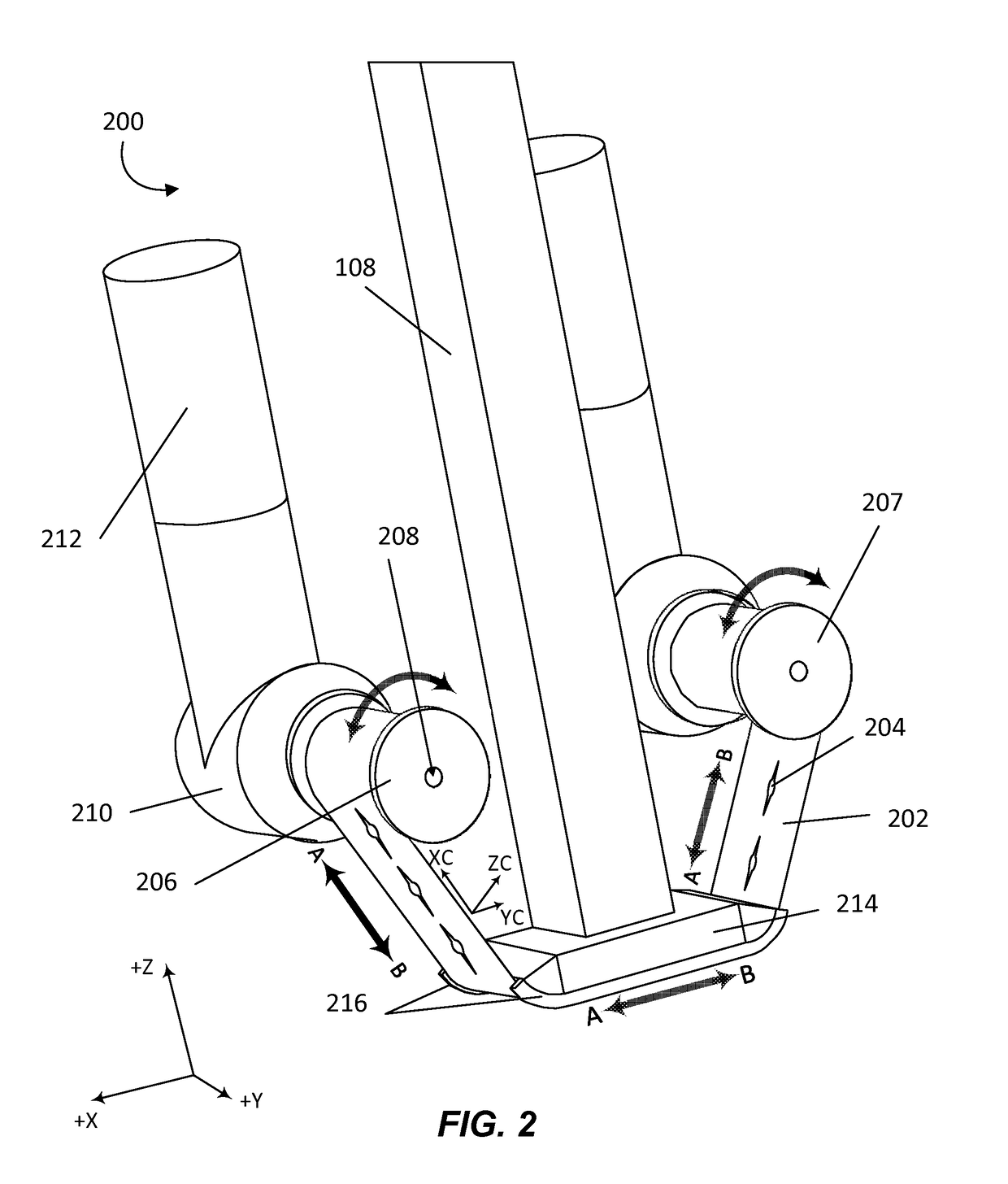System and method for cutting material in continuous fiber reinforced additive manufacturing
a technology of additive manufacturing and continuous fiber reinforcement, applied in the direction of additive manufacturing processes, manufacturing tools, layer means, etc., can solve the problems of insufficient separation of feedstock from extruder, simple halting of fiber reinforced feedstock, and impracticality of cutting manually or by typical cutting devices
- Summary
- Abstract
- Description
- Claims
- Application Information
AI Technical Summary
Benefits of technology
Problems solved by technology
Method used
Image
Examples
example embodiments
[0064]FIG. 1 illustrates an example of a manufacturing system that can be used in conjunction with the various techniques and embodiments of the present disclosure. According to various embodiments, manufacturing system 100 may include controller 102, build chamber 104, robotic mechanism 106, extruder 108, opening 110, opening 110-1, feedstock pass through zone 111, moveable table 112, object 114, cutting device 116, extruded material 118, material source 120, material feedstock 120-1, material source 121, material feedstock 121-1, material source 122, and material feedstock 122-1. In accordance with various embodiments, manufacturing system 100 may be a fused deposition modeling system configured to build a three dimensional object depicted as object 114. In some embodiments, controller 102 may be a computer system with memory and one or more processors configured to control various manufacturing processes including, but not limited to material input, robotic arm movement, extruder...
PUM
| Property | Measurement | Unit |
|---|---|---|
| Length | aaaaa | aaaaa |
| Angle | aaaaa | aaaaa |
| Perimeter | aaaaa | aaaaa |
Abstract
Description
Claims
Application Information
 Login to View More
Login to View More - R&D
- Intellectual Property
- Life Sciences
- Materials
- Tech Scout
- Unparalleled Data Quality
- Higher Quality Content
- 60% Fewer Hallucinations
Browse by: Latest US Patents, China's latest patents, Technical Efficacy Thesaurus, Application Domain, Technology Topic, Popular Technical Reports.
© 2025 PatSnap. All rights reserved.Legal|Privacy policy|Modern Slavery Act Transparency Statement|Sitemap|About US| Contact US: help@patsnap.com



